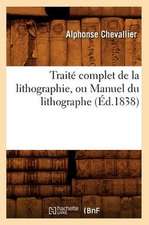Data Design: Visualising Quantities, Locations, Connections
Autor Professor Per Mollerupen Limba Engleză Paperback – 20 mai 2015
Preț: 183.08 lei
Preț vechi: 309.12 lei
-41% Nou
Puncte Express: 275
Preț estimativ în valută:
35.05€ • 35.96$ • 29.51£
35.05€ • 35.96$ • 29.51£
Carte disponibilă
Livrare economică 06-20 februarie
Livrare express 22-28 ianuarie pentru 160.22 lei
Preluare comenzi: 021 569.72.76
Specificații
ISBN-13: 9781408191873
ISBN-10: 1408191873
Pagini: 176
Ilustrații: 11 colour tables, 1 bw table, 82 colour charts/graphs, 69 bw charts/graphs, 40 colour illus, 5 bw illus
Dimensiuni: 150 x 240 x 15 mm
Greutate: 0.43 kg
Editura: Bloomsbury Publishing
Colecția Bloomsbury Visual Arts
Locul publicării:London, United Kingdom
ISBN-10: 1408191873
Pagini: 176
Ilustrații: 11 colour tables, 1 bw table, 82 colour charts/graphs, 69 bw charts/graphs, 40 colour illus, 5 bw illus
Dimensiuni: 150 x 240 x 15 mm
Greutate: 0.43 kg
Editura: Bloomsbury Publishing
Colecția Bloomsbury Visual Arts
Locul publicării:London, United Kingdom
Caracteristici
A highly practical guide to the design of quantities, locations and other forms of data.
Notă biografică
Per Mollerup is Professor of Communication Design at Swinburne University of Technology, Melbourne, Australia. He previously edited and published Mobilia Design Magazine and Tools Design Journal in Copenhagen, Denmark. From 1984-2009 he was the owner and principal of Designlab in Copenhagen, an award-winning design consultancy specialising in wayshowing and branding. He is the author of several books on design, including Marks of Excellence: The History and Taxonomy of Trademarks (1997, 2013); Collapsibles: A Design Album of Space-Saving Objects (2002); Brandbook: Branding, Feelings, Reason (2008) (in Danish); PowerNotes: Slide Presentations Reconsidered (2011) and Wayshowing>Wayfinding: Basic & Interactive (2013).
Cuprins
IntroductionOrganizing Knowledge Field of StudyGoalsBenefitsInformation GraphicsSimplicityMilestonesBasicsBeware of Visual DisplaysResearch and Common SenseGestalt Principles of PerceptionPsychological PrinciplesColourNotationReading Visual DisplaysChoice of DisplayVisualising QuantitiesVariablesPie ChartsVertical Bar Charts Histograms Stem-and-leaf PlotsHorizontal Bar ChartsDivided Bar ChartsStacked Bar ChartsStep ChartsBubble ChartsLine ChartsLayer Charts Radar ChartsScatter PlotsPicture TablesHeat MapsSmall MultiplesDon'tsVisualising LocationsThematic MapsMap ScaleMap ProjectionThe Geographical Coordinate SystemMap OrientationChoropleth MapsProportional Symbol MapsIsopleth MapsCartogramsChorochromatic MapsDot Distribution MapsTransit mapsYou-Are-Here MapsVisualising ConnectionsTreesDecision TreesTreemapsMind MapsPositioning MapsTimelinesFlow ChartsConcept MapsVenn DiagramsCarroll DiagramsEuler DiagramsEnd MatterSourcesIndexAcknowledgementsAuthor Bio
Recenzii
Data Design makes a strong and clear attempt to describe the principles and practices of data visualisation needed to make data easily perceptible ... The book is very practical, no specialist tools are required ... [and it] also supports critical thinking ... A useful reference guide ... both parsimonious and comprehensive.
This book is intelligent and wise, clear and beautiful, stimulating and useful. It distills and presents in one place a mountain of research results and tried-and-true best practices. It is an invaluable resource for anyone interested in visual communication.
I love the economy of expression in Per Mollerup's writing. He applies the classic Danish design approach (modern but human) to the explanation of design, isolating the essence of a topic, then explaining it simply. This book joins his seminal 'Wayshowing' as an essential text.
With the key words communicate, record and understand, Mollerup guides the reader in how to design complex data to facilitate the interpretation act. Generous well-designed visualizations and explanations work together as useful guidelines for anyone that frequently presents quantities, locations and connections.
This book is intelligent and wise, clear and beautiful, stimulating and useful. It distills and presents in one place a mountain of research results and tried-and-true best practices. It is an invaluable resource for anyone interested in visual communication.
I love the economy of expression in Per Mollerup's writing. He applies the classic Danish design approach (modern but human) to the explanation of design, isolating the essence of a topic, then explaining it simply. This book joins his seminal 'Wayshowing' as an essential text.
With the key words communicate, record and understand, Mollerup guides the reader in how to design complex data to facilitate the interpretation act. Generous well-designed visualizations and explanations work together as useful guidelines for anyone that frequently presents quantities, locations and connections.













